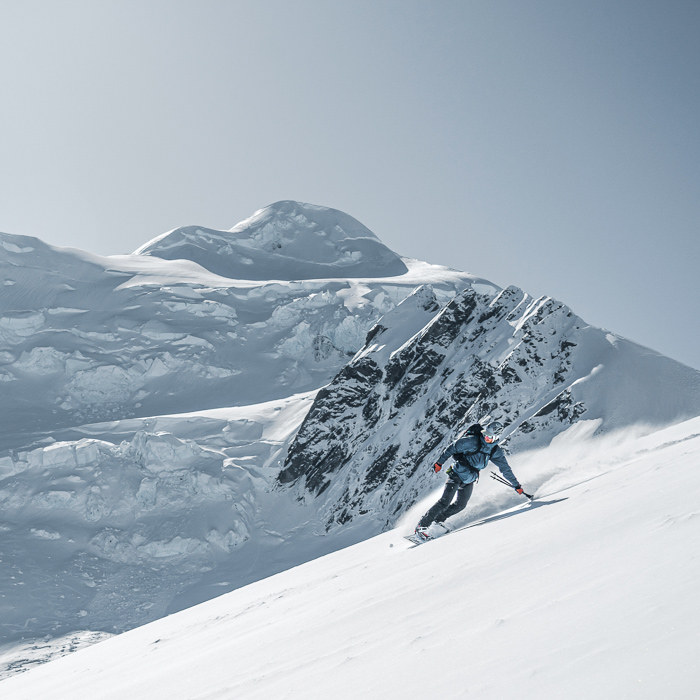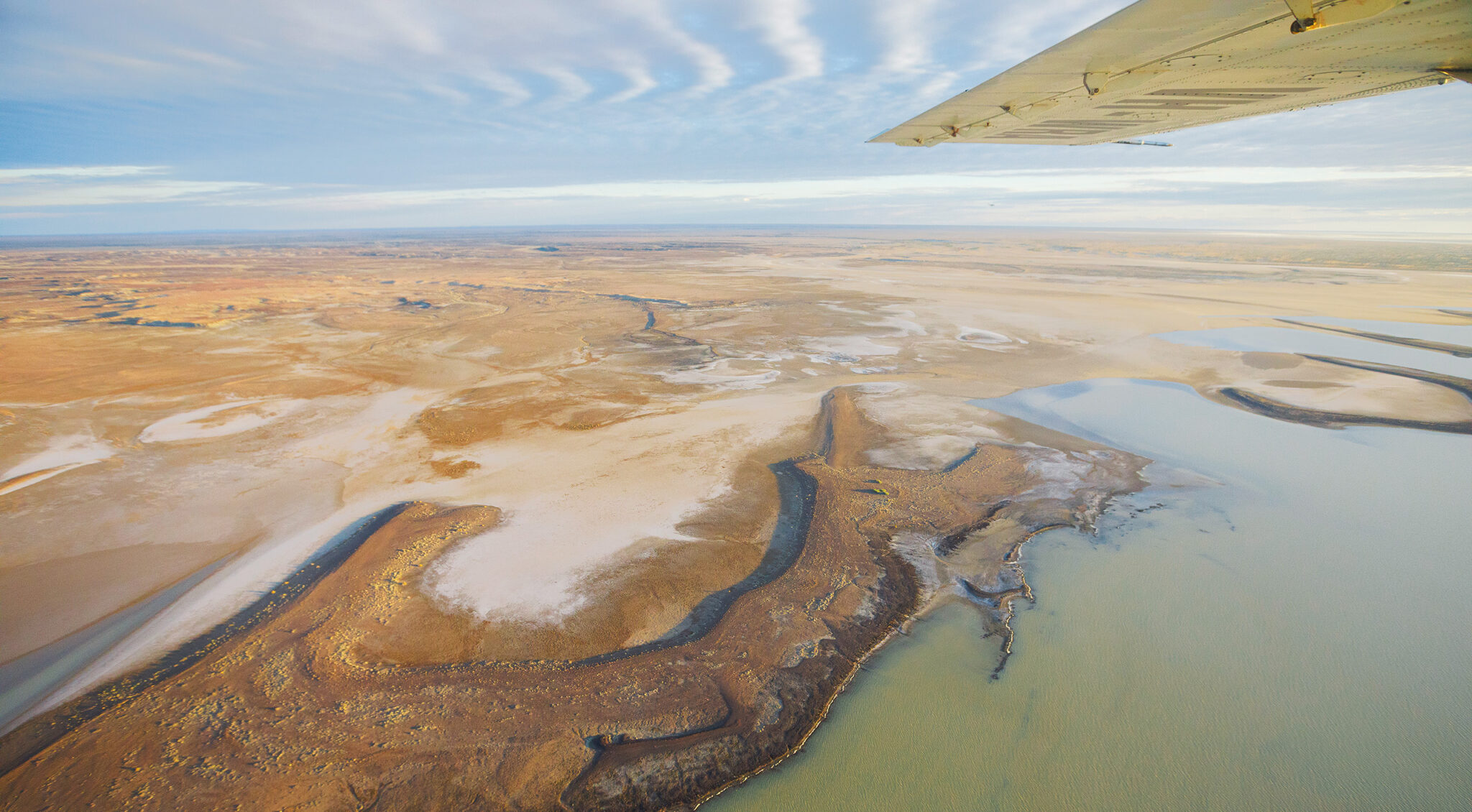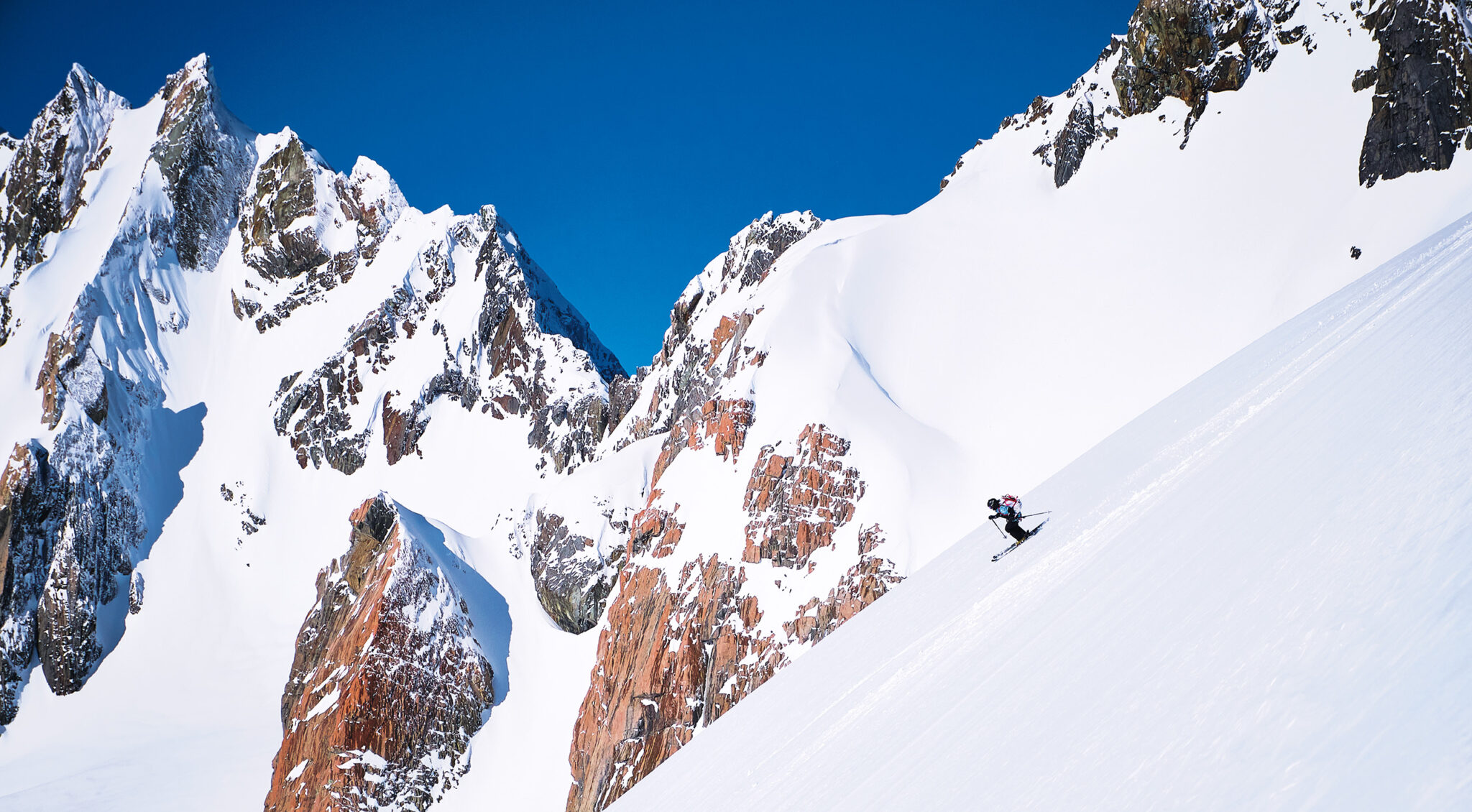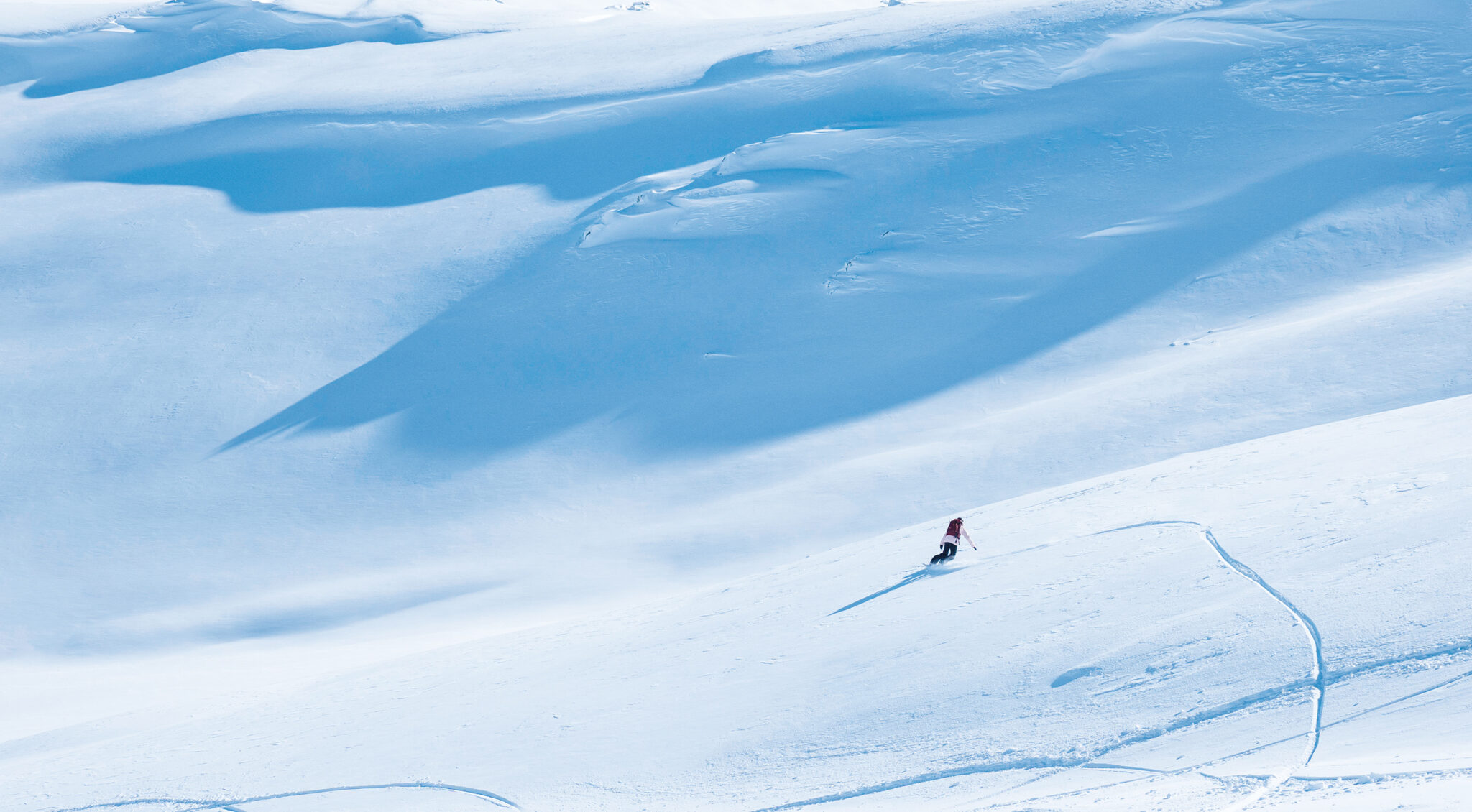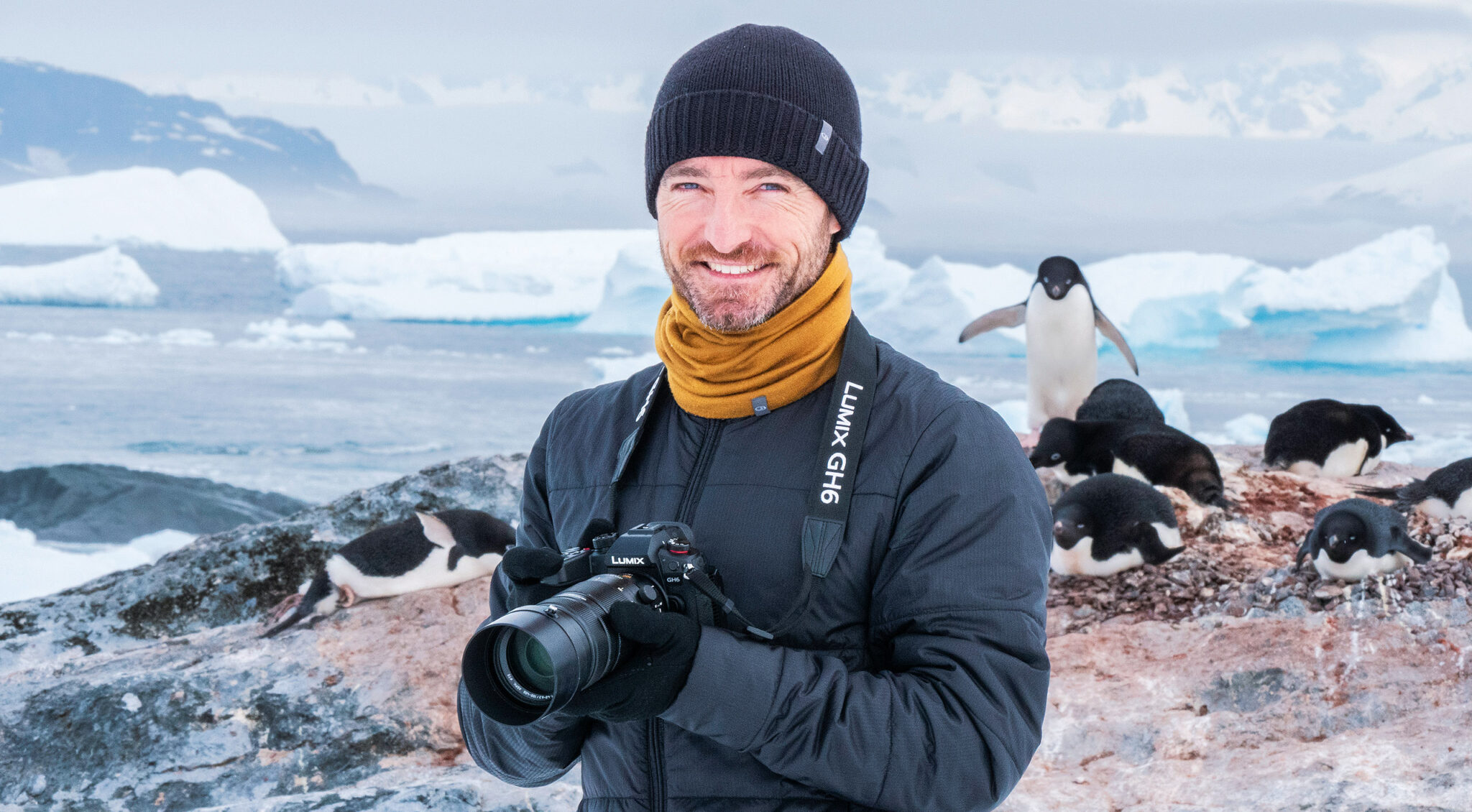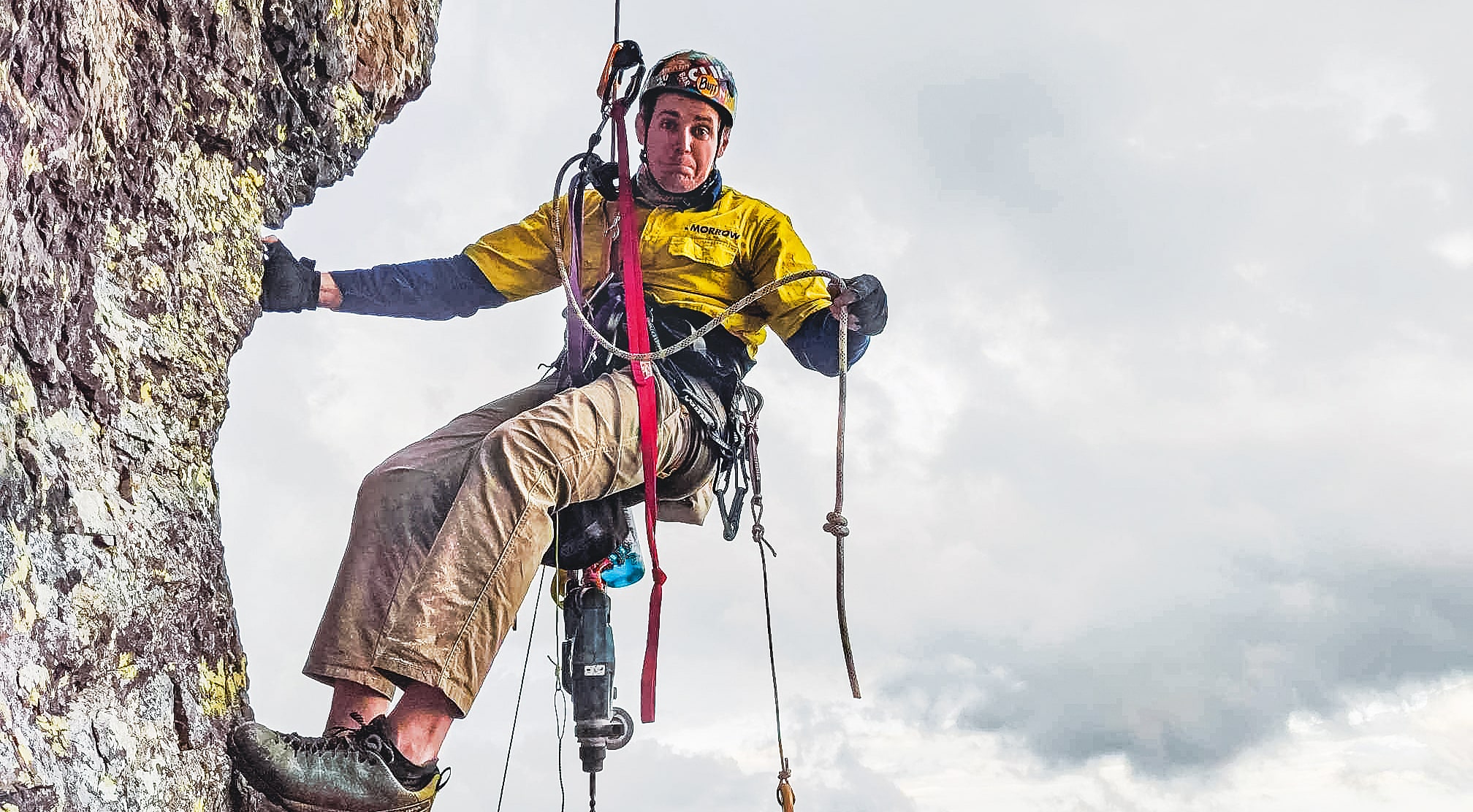Freedom of the Hills
After leaving the Army, Mat Young felt intensely isolated. In this heartfelt piece, he tells how he found his way out of darkness via an extended stint of climbing in NZ’s Southern Alps.
Words: Mat Young
Header image credit: Adam Flower
WARNING: THIS STORY DISCUSSES SUICIDE
(This story originally featured in Wild #190, Summer 2023)
In the void below me sat the West Face of Mt Aspiring/Tititea: fifty degrees at its steepest, and today in less-than-perfect conditions. Adam and Ollie had already dropped, departing with the harsh scrape of sharp edges on icy snow.
On my snowboard, I am confident. I back myself to get down just about anything. But this—a classic ski-mountaineering line on a big mountain—would be the toughest test yet of that belief. If I lost control in these conditions … well, there was no margin for error.
This was the moment, the peak of a winter spent getting after it in the mountains of New Zealand, climbing like it was my job. It was a moment I believed I was ready for. But the joy and exhilaration of getting here couldn’t have been further from the challenges of the twelve months preceding it, because 2021 was the worst year of my life. For months, all I could think about was how little I valued my own life.
REWIND TO JULY 2020. After eight years of service, I transitioned out of the Australian Army, ready for a new lifestyle, hopefully one built around climbing. My time in the Army had been well spent: I left with some operational experience, a few memories worth holding on to, and some friendships that will last me a lifetime.
But moving from the Army to civilian life was jarring. I had thrived in my role as a combat engineer; I was a leader, I was skilled, and I was experienced. But as a civilian with few real-world qualifications or experience, I began to feel like there was no place for me outside of the ADF; the future I saw for myself was bleak. From high achiever to shit kicker, this challenge to my sense of identity was confronting. My mental health began to suffer.
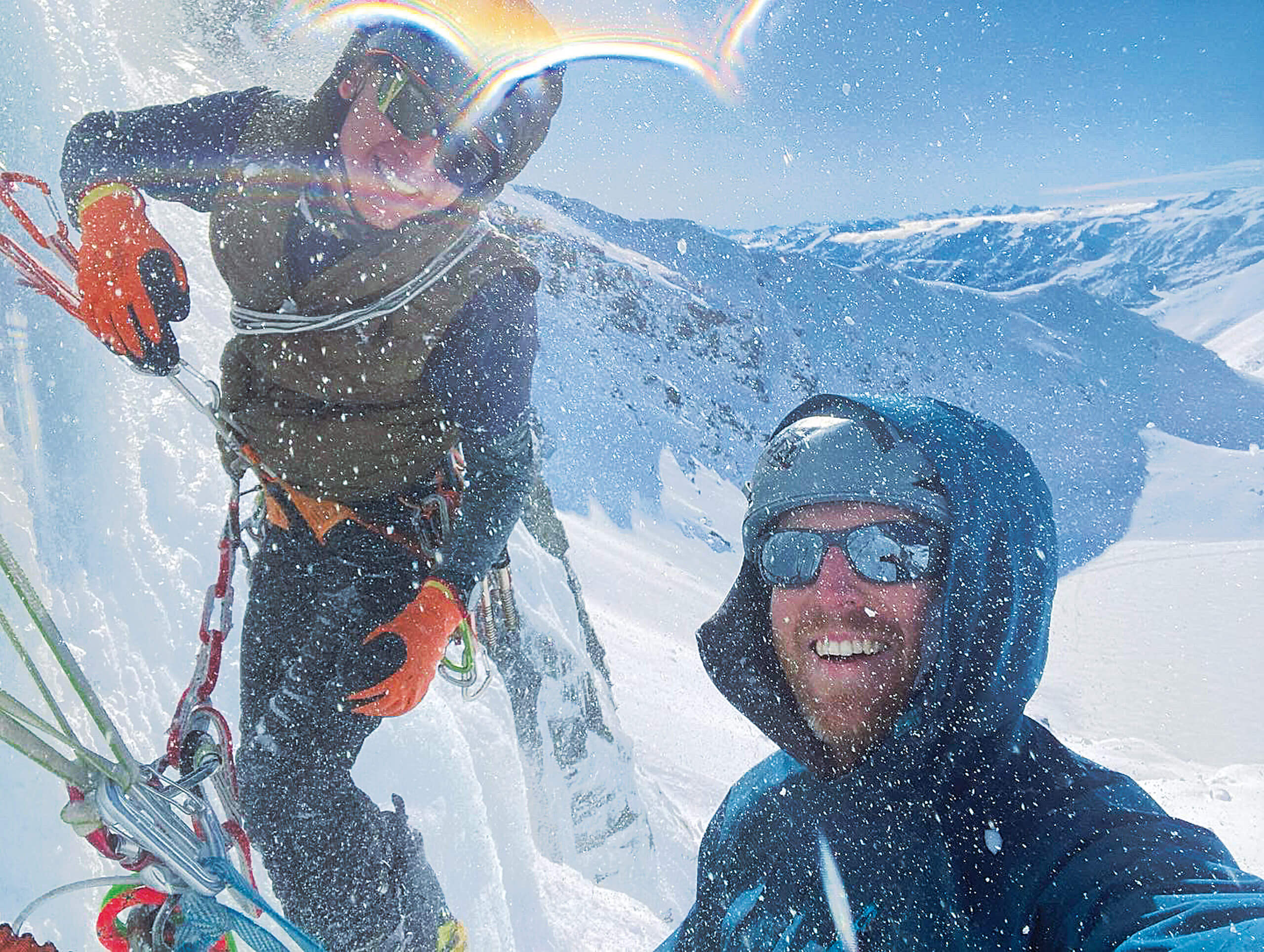
What followed was a deep depression that I’m thankful to have made it through, and without the burning drive to climb and test myself in the mountains, I might not have. But despite being unable to shake this persistent suicidal ideation, I never seriously contemplated suicide. That’s partly because I know, first-hand, the pain it would cause my friends and family, but also because I know that when I go to the mountains, it all goes away. When I’m so focussed on the next foot placement that my entire world shrinks to that moment. Or, when I’m flying down a steep slope with a blank canvas of untracked powder in front of me and I am set truly free. I go to the mountains with my burdens; without fail, I return a better version of myself.
The descent of Aspiring’s West Face went as you might imagine. None of us shredded that face like a highlight reel set to a soundtrack played by M83. We rode it slowly and carefully, ice axe in white-knuckled hand. It was survival skiing, but still, we got down in one piece. In hindsight, we rode the face too early in the day; the weather was too cold, and we didn’t give the snow enough time to soften in the spring sun. It was a successful descent, but I’ll have to go back another time for that glory lap.
TAKING THREE MONTHS OFF TO GO alpine climbing in New Zealand wasn’t the best financial decision I’ve ever made. But at that point in my life, pursuing the intensity of that lifestyle, and the meaning it gave me, was something I needed. The search for purpose mattered more than the numbers in my savings account. It was an immersive experience, one ultimately more rewarding than I ever imagined. Those twelve weeks likely changed the course my life will take moving forward. But it was an experience I felt I deserved—deserved for surviving the most challenging bout of mental illness that I can imagine.
“Taking three months off to go alpine climbing in new zealand wasn’t the best financial decision I’ve ever made.”
My trip began at the Remarkables Ice and Mixed Festival. The annual meeting in Queenstown is known for bringing together not just Kiwi climbers but climbers from around the planet; it’s also a waypoint for adventurous Aussies looking to dip their toes into alpine climbing. Toe dipping, though, didn’t appeal to me; I wanted to jump in head first.
During the festival, I connected with several other climbers; these connections afforded opportunities to climb for the rest of my trip. Ted Bannister-Sutton is a Kiwi crusher who’s solid and makes it all look so easy. (Ed: You may remember the photo of Ted that graced the gallery section of the mag just two issues back in Wild #188). Adam Flower is another Aussie who was on the same track as me; hyper-motivated, and was spending an extended stint in NZ to develop his alpine-climbing skills. He’s also a great bloke, and is exceptional behind the lens of his camera (Ed … AGAIN: He certainly is! Adam is a regular contributor to Wild’s gallery pages, and actually took the just-mentioned photo of Ted).
A few moderate outings together had us searching for a greater level of complexity and adventure; Aspiring loomed large—an inspirational pyramid of ice and stone that just begs to be climbed. Looking back, I love how much this stunning mountain became the yardstick for my progression as an alpine climber.
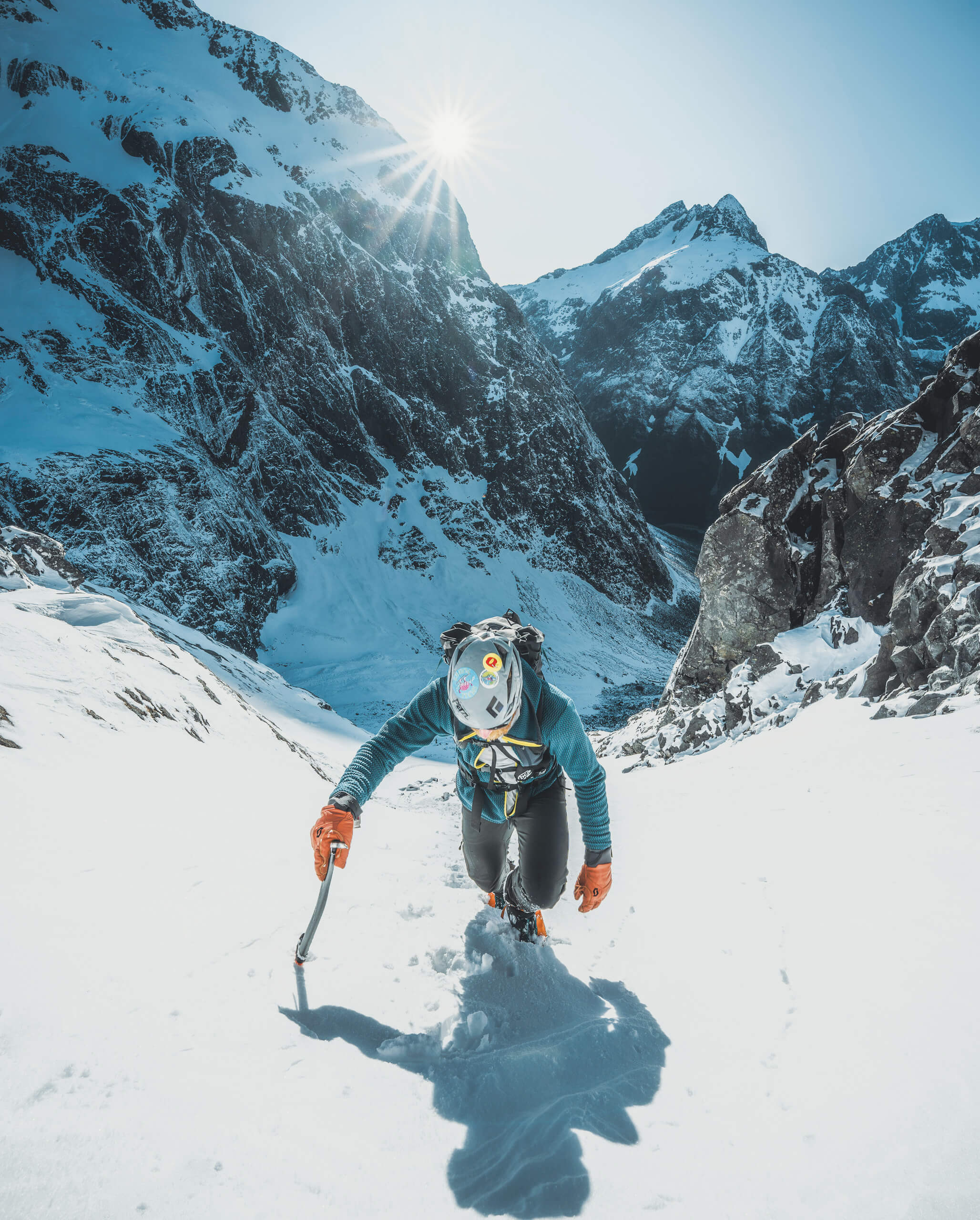
We camped among the seracs, and then on a perfect, clear day, set off up Aspiring’s Southwest ridge—conditions had steered us to this classic, aesthetic line. Now, for most climbers of a certain calibre, if you’re on snow you’re soloing, mostly for the sake of moving quickly; so it went for the SW Ridge. And although I didn’t have the mileage in the mountains to feel as comfortable as the others when climbing unroped, I sucked it up.
After half a kilometre of front-pointing up the spectacular ridge that makes up the bulk of the climb, we arrived at the crux: a rope length of hard, blue ice high above the glacier. I wanted the lead, and Adam and Ted graciously let me have it. The payment they received in return was having to belay in a shower of falling ice.
Trying to find meaningful connections with new people can seem hollow in comparison. It’s hard, and this difficulty connecting can make for an intensely lonely experience.
We topped out in perfect weather, and shared an unhurried snack at the top. Sitting there, head and shoulders above the surrounding peaks, I waited for a sense of euphoria at having attained the summit. But it was upon returning to Earth that a sense of achievement finally stirred, not from reaching the top, but from the knowledge that we climbed a proud line, in good style, and with friends. Maybe, I thought with pride, I had the ‘right stuff’ to climb in the alpine at a reasonable standard. I was beginning to feel like I belonged within the small community of young guys pushing their climbing in these challenging hills.
A sense of belonging is something you get straight away in the Army. It’s drummed into you, in fact. And when you discharge from the Army, it means leaving an environment where deep bonds have formed between colleagues through years of shared hardship. For ex-Defence personnel, entering the civilian world and trying to find meaningful connections with new people can seem hollow in comparison. It’s hard, and this difficulty connecting can make for an intensely lonely experience.
While no one fully understands the complex emotional state that people find themselves in after leaving the Army, my personal experience has highlighted how devastating losing that sense of belonging can be. When I ponder the reasons for my friends taking their own lives, I question whether they, too, felt these feelings of overwhelming isolation.
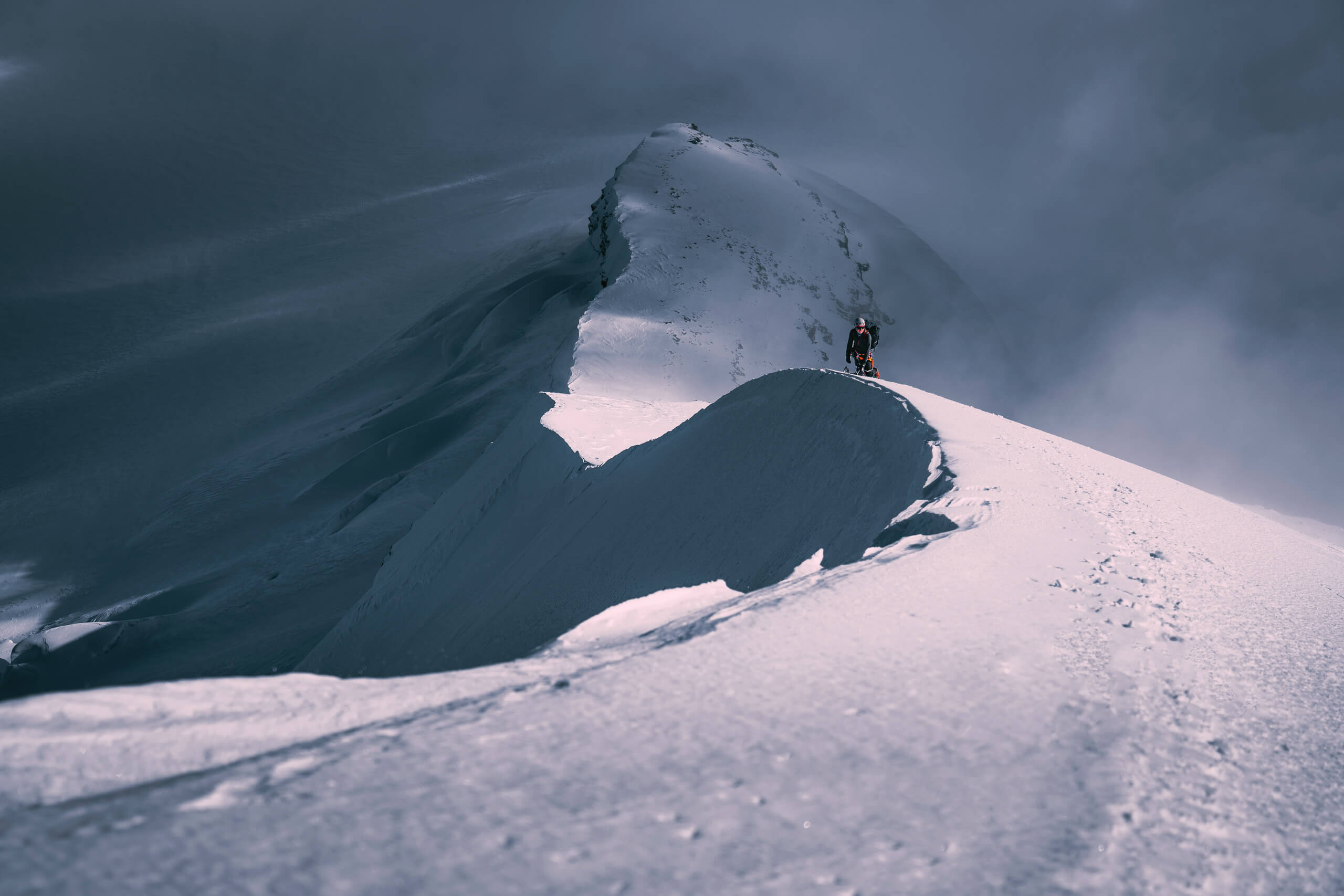
While my experience was painful and left its mark, I am not unique. Almost everyone in Defence has a personal connection to this issue: Within the ADF community, it’s not a question of if someone you know will go through something like this, but when. So many people struggle to find purpose after leaving the Army.
Many also struggle with mental health, and too many of them take their own lives as a result. Veteran suicide is a serious problem. In 2020 alone, 79 ex-Defence personnel took their lives. And between 1997 and 2020, according to a report issued by the Australian Institute of Health and Welfare, 1,600 of us committed suicide. That’s one father, son, wife or daughter every five days for 24 years.
ABOUT HALFWAY THROUGH MY three-month trip, I felt like I was ticking along nicely. I didn’t have many preconceived ideas regarding what I might achieve, but I was stoked with how good I felt in big terrain on my splitboard. I wanted to take it further.
Adam Sanders and I have been climbing together since 2020. We started trad climbing together and our partnership had taken us up and down the east coast of Australia, to some of the country’s most adventurous and iconic crags, Frog Buttress and Arapiles among them. But Adam has also been sharing a similar relationship with Ollie Dowling—a young and intensely motivated guy who is nonetheless a proper Kiwi gentleman—so it was fitting that we decided to all spend a few days together at Pioneer Hut.
The hut lies at 2,400m, perched atop a cliff amid a broad expanse of glacial névé, and the opportunities for climbing and ski touring from it are near limitless. Some of New Zealand’s highest mountains soar majestically nearby; one of them, Mt Tasman—an imposing and visually striking hulk of a mountain—is at 3,497m the nation’s second highest peak. Meanwhile, in the distance, if the day is bright and clear, the Tasman Sea is visible crashing against the West Coast. It’s a setting that invites boldness, and with a forecast of sunny weather and a stable snowpack, the stage was set for a productive stint in the hills. Our goal was to climb every day.
The scenic heli flight up and over the Fox Glacier had us giddy and psyched to climb. We immediately dropped our gear, racked up and set out for a warm-up route on the steep alpine ice of Mt Alack’s south face. We’d actually planned on climbing something different, but when we saw this pitch of thick ice—nerve tingling in its verticality—we were compelled to climb it.
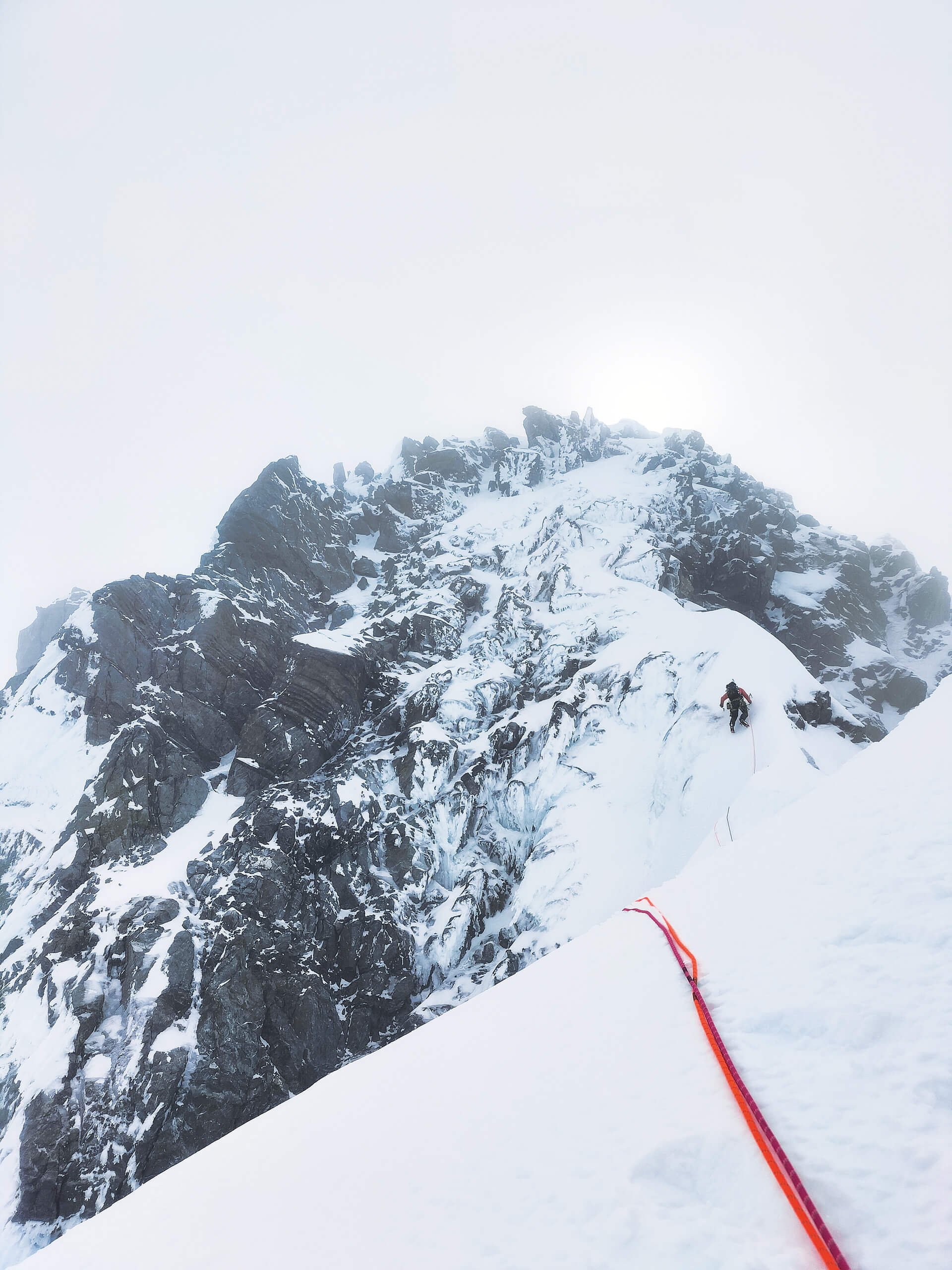
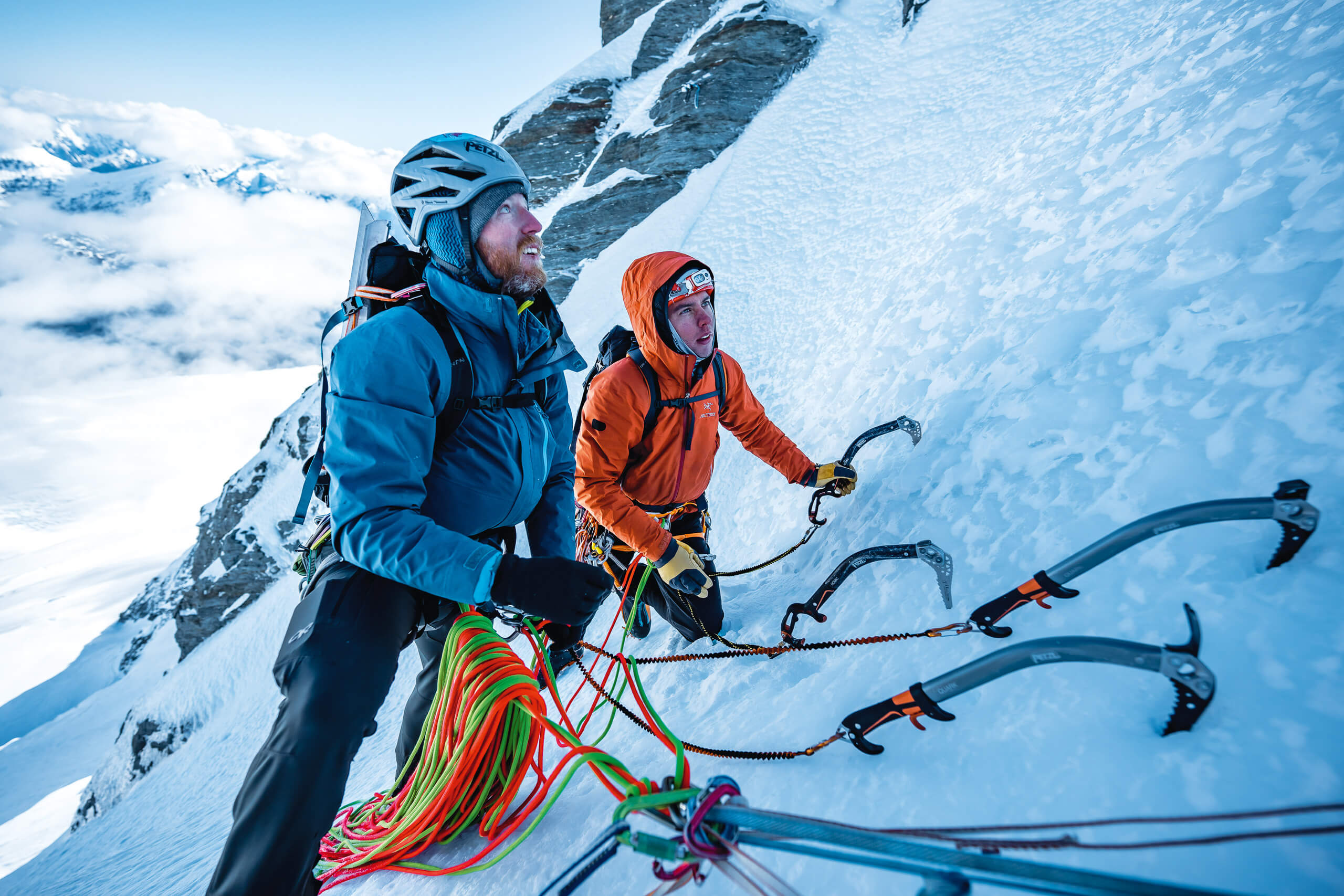
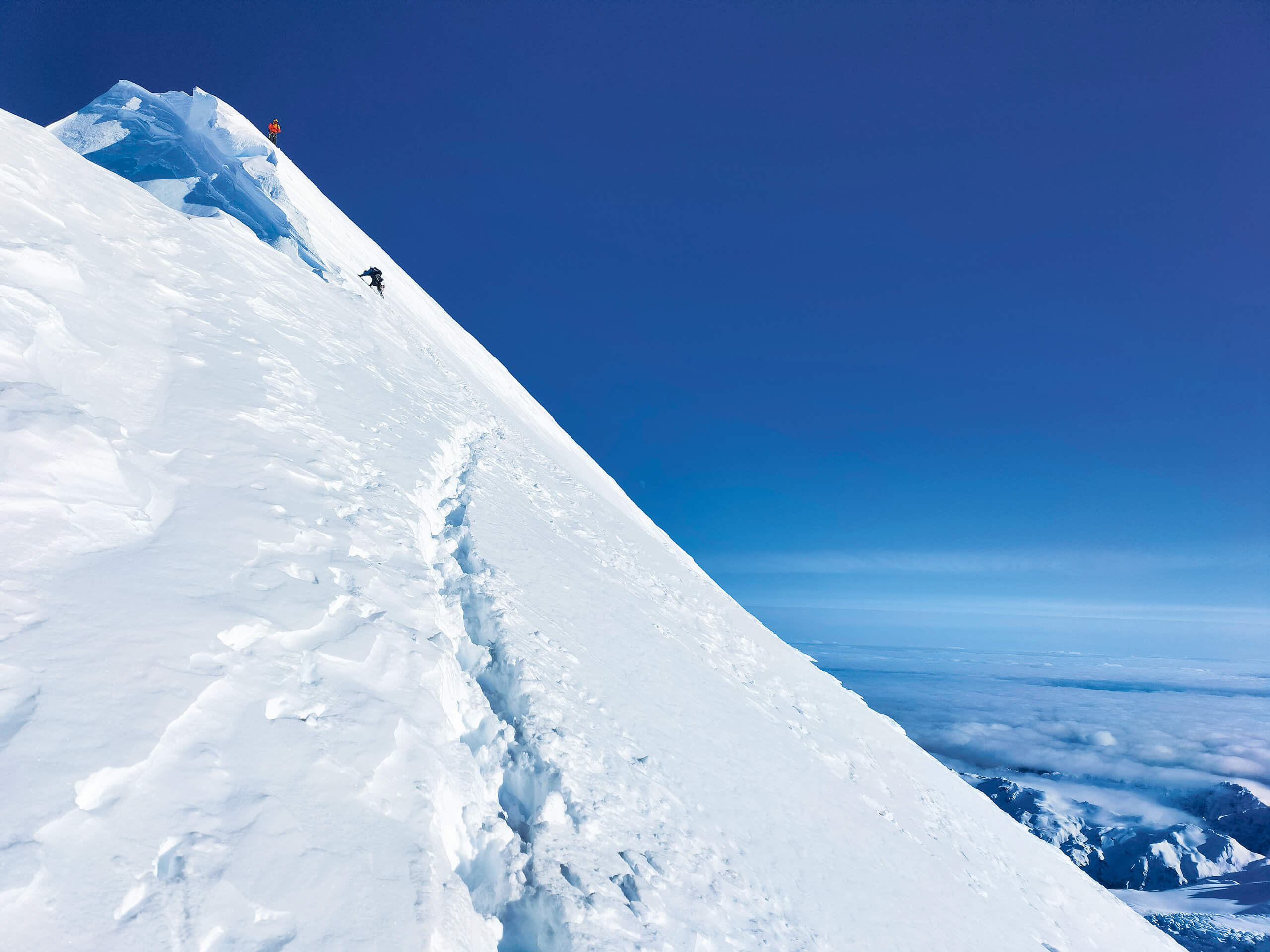
That evening, we set our alarms for 2:00AM. The day’s goal was the north shoulder of Mt Tasman; it promised to be a long day moving in highly exposed terrain. Attempting a climb with this level of commitment feels a bit like putting your head in a noose. But after a lengthy approach, we arrived only to find bare ice; our crampons’ front points couldn’t dig in more than a few millimetres. It felt desperately insecure. Soloing was out.
Forced to reevaluate, we settled instead for a splitmo (splitboard mountaineering) descent of Lendenfeld Peak. Now, we could have adjusted our strategy and still gone for Tasman: We could have pitched it out or simply accepted more risk. But the prospect of climbing with that heightened level of concentration for 8-12 hours was far more than we’d bargained for. We decided it would be better to attempt it another time, when conditions were more suited to our preferred style of ascent.
“As we approached the crux—a mixed pitch of ice and rock—the shrieking began. It was the wind; the storm was arriving early.”
And so we climbed Lendenfeld. Although it’s one of New Zealand’s 24 peaks over 3,000m, the mountain almost feels like an afterthought tacked onto nearby Mt Tasman. That said, it’s still a noteworthy consolation prize, with a beautiful 45-degree snow slope that’s a joy to descend before you thread your way through the yawning crevasses of Heemskerck Glacier’s icefall. One of those crevasses had swallowed one of my ski poles that very morning, after I dropped it and it slid down before disappearing into a dark abyss. On the descent, I made sure not to suffer the same fate.
Our next objective was Mt Haidinger’s south ridge; with a storm forecast to roll through that afternoon, we wanted something we could do quickly. Straddling the Main Divide, Mt Haidinger, with its broad shoulders, ticked that box perfectly. Setting off at sunrise, we ski toured up mellow terrain, gaining the ridge in good time, peering up at the west face which was encrusted with streamers of blue sastrugi. But as we approached the crux—a mixed pitch of ice and rock—the shrieking began. It was the wind, roaring through the notch below us with a horrific tearing sound. The storm was arriving early.
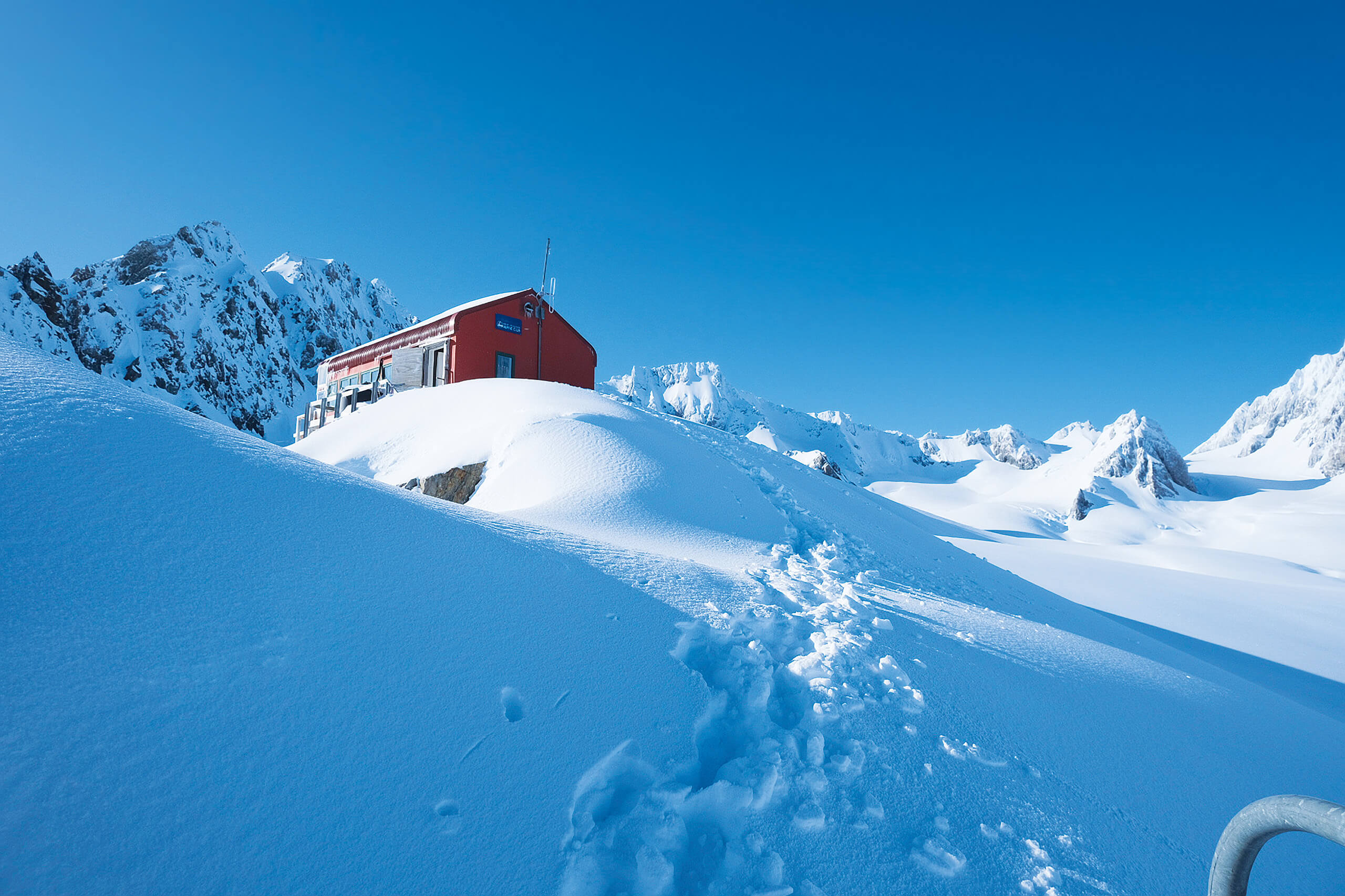
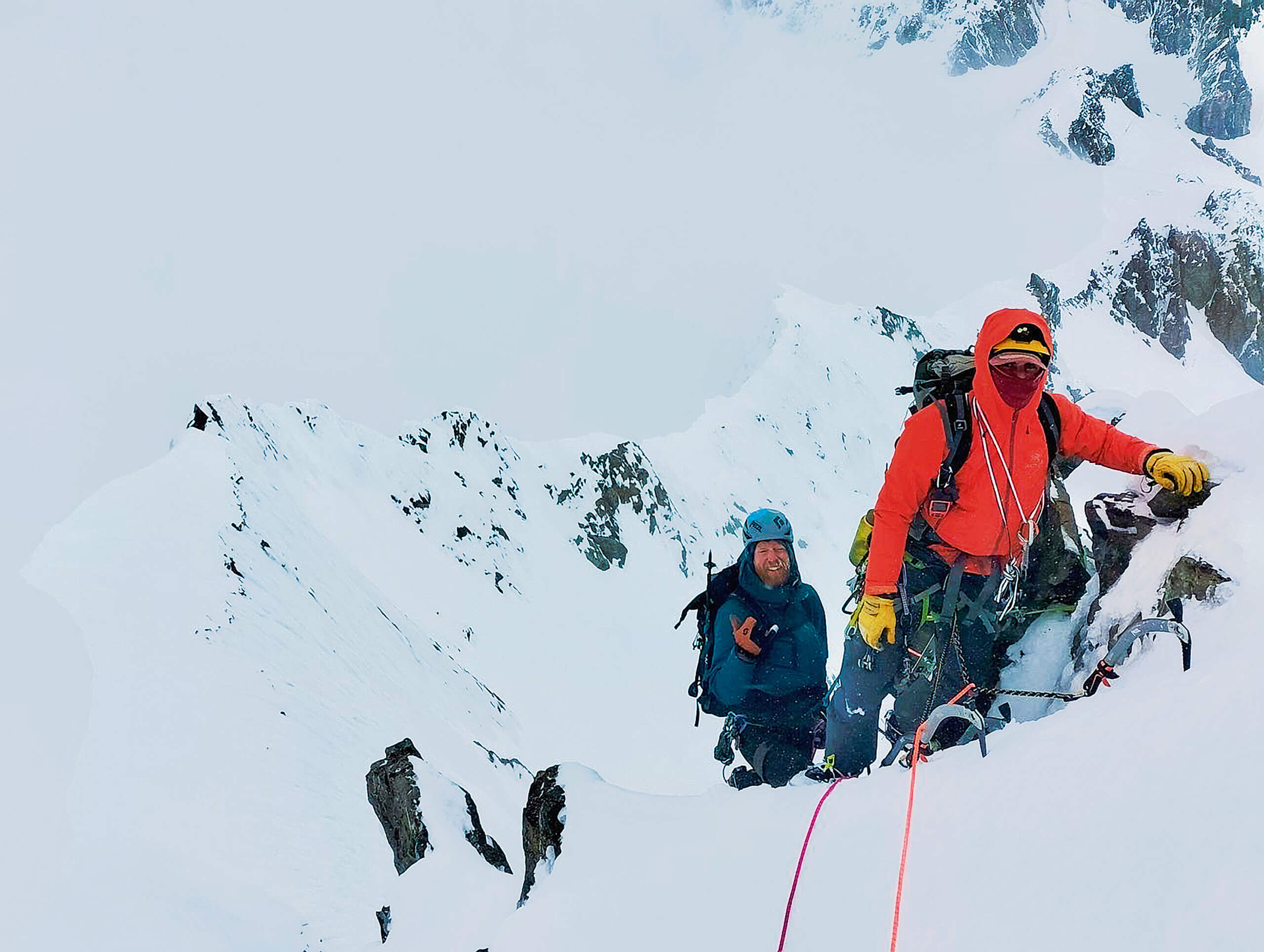
It was Ollie who suggested this route; that meant, according to our group’s informal rules, the crux was his lead. With a growing sense of urgency, he pushed through the brutally cold winds and blinding spindrift. Adam and I seconded as fast as our chilly bodies and stiff hands would allow. Meanwhile, the clock ticked silently in each of our heads.
At the top, we shared a quick high five. But we knew without words that a speedy descent was needed, albeit not one so breakneck that we’d compromise safety; we still needed to take care of each other. After a few abseils—a couple off V-threads, and one off a snow picket we had to leave behind—and then a careful ski down in flat light, we were back at the hut, nursing our hot drinks with frost-nipped fingers.
The storm, when it eventually slammed into us with its full force, came with unrelentingly vicious winds; in the whiteout, we were trapped in the hut for the next two days. It gave us plenty of time to recover, and to reflect on some lessons learned the hard way.
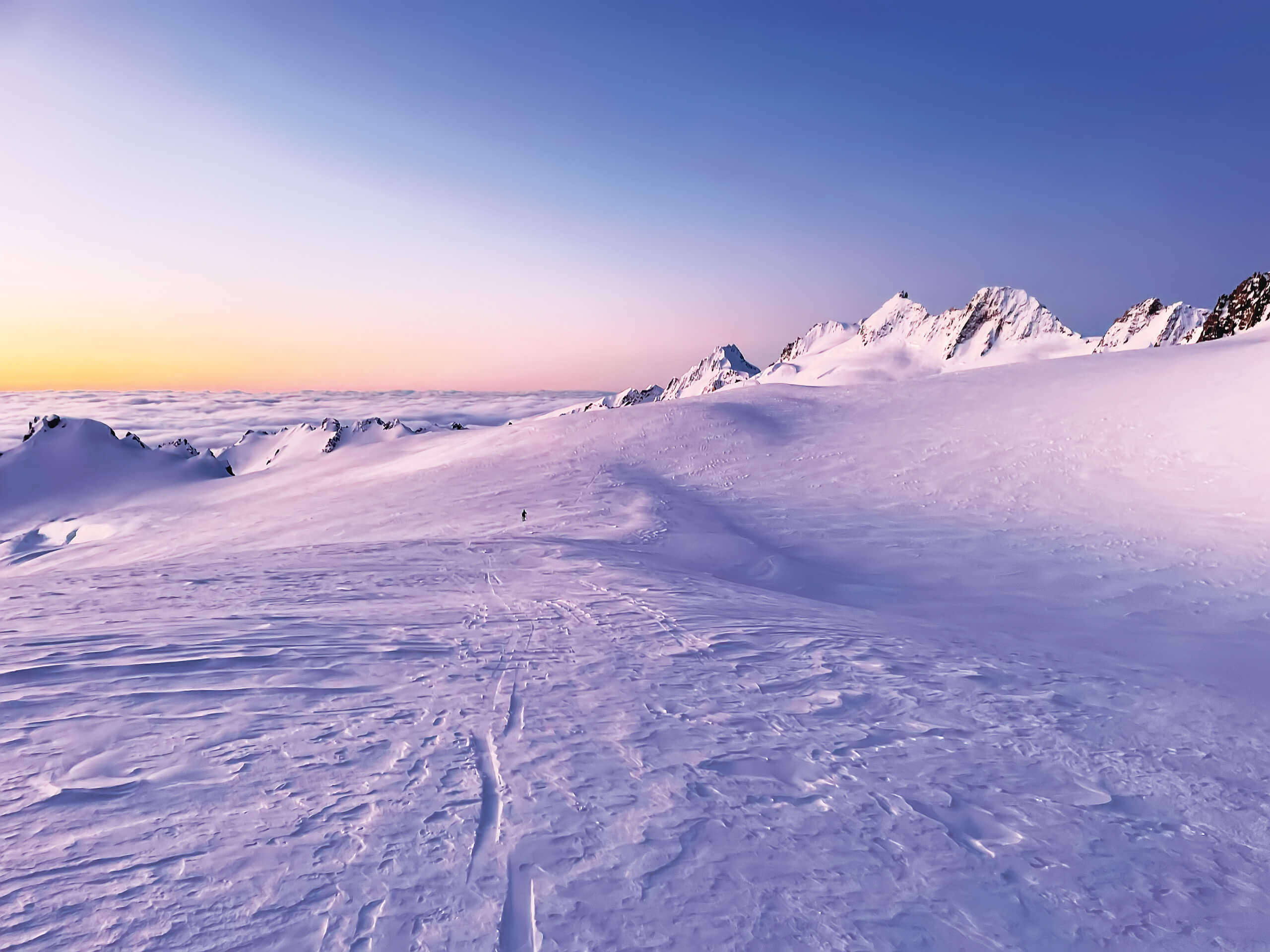
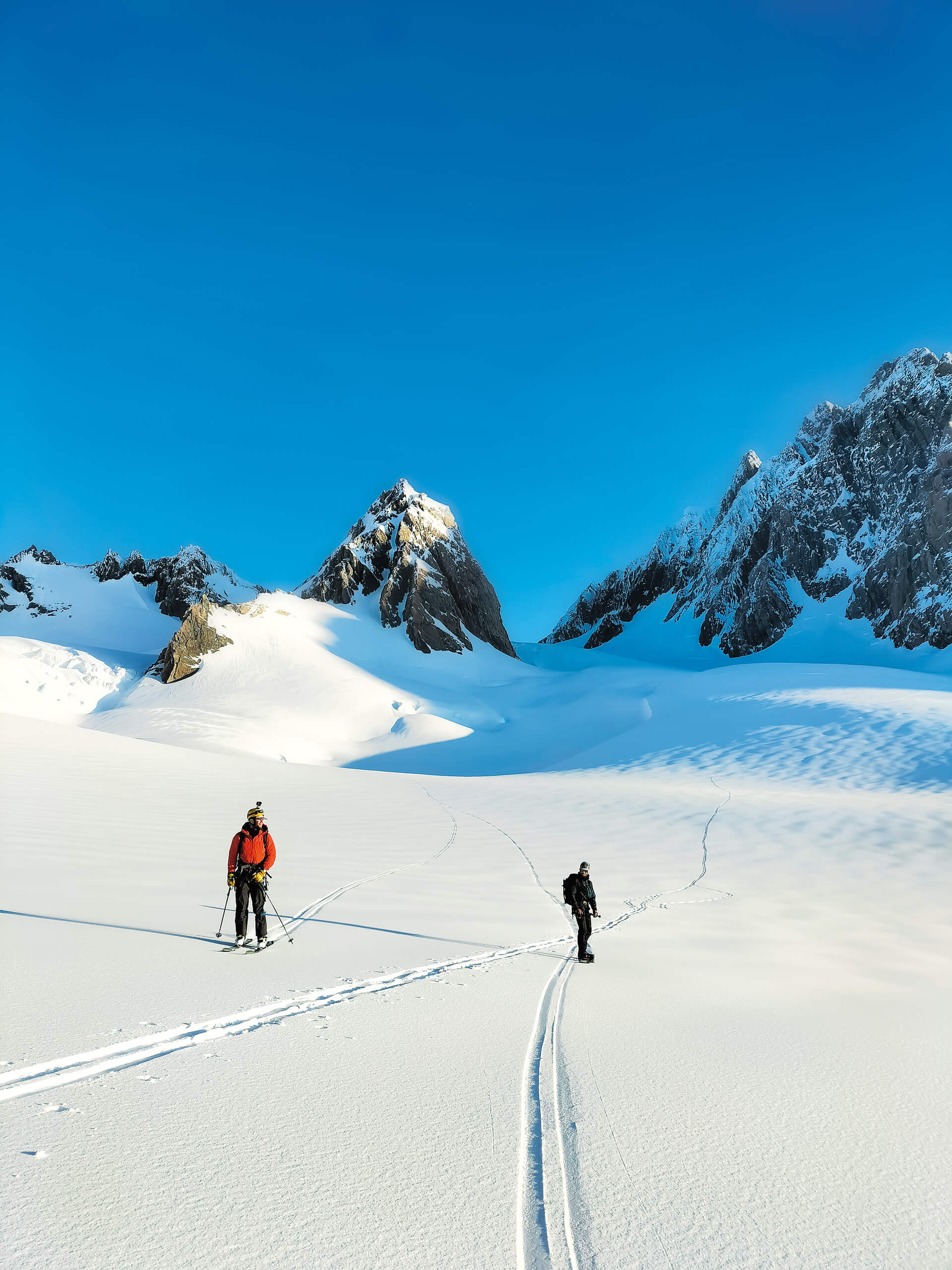
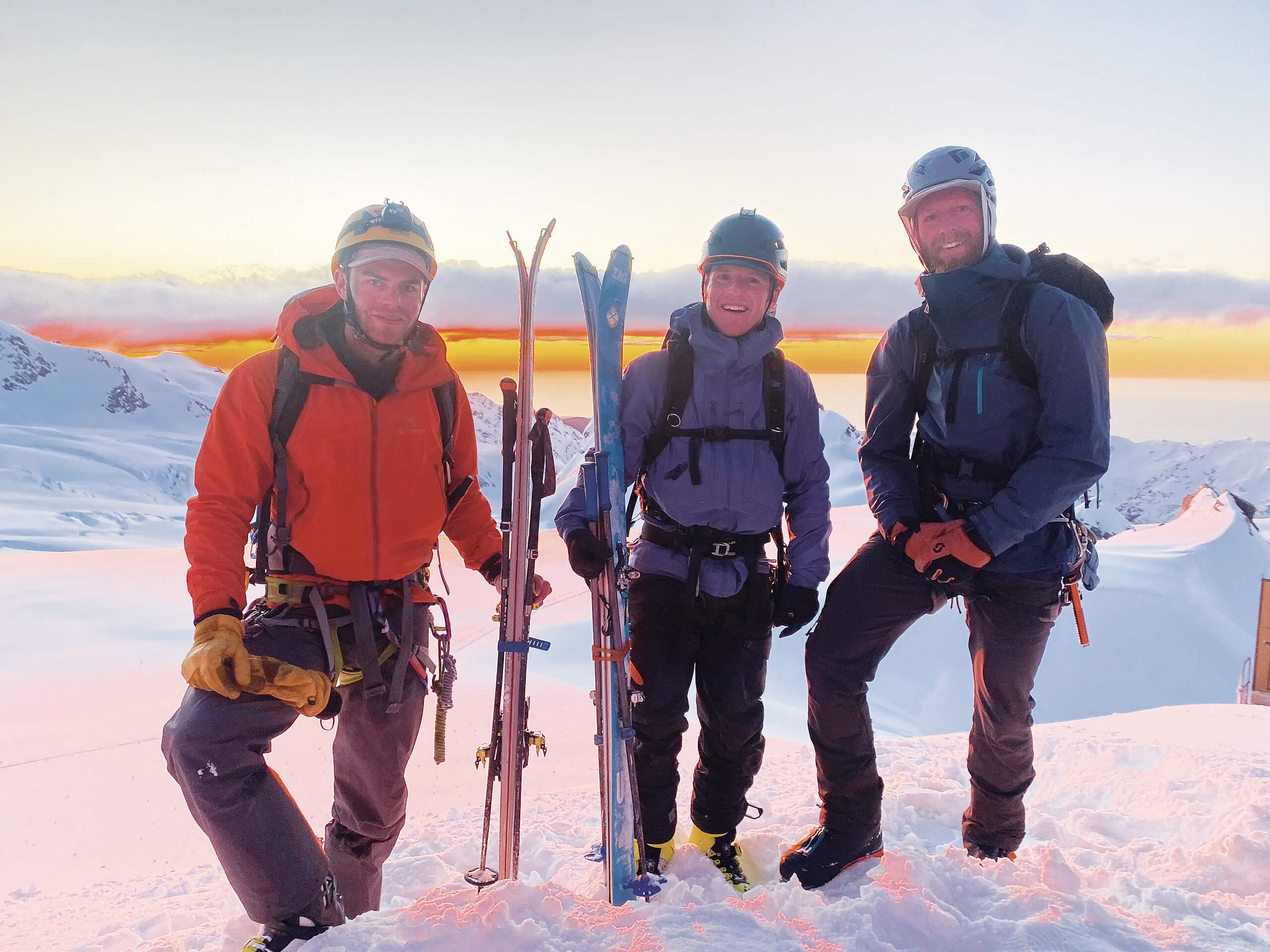
SPLITBOARD MOUNTAINEERING ENABLES you to travel quickly and efficiently in alpine terrain, and that’s a beautiful thing. But combining climbing and snowboarding in a way that actually challenges both can be tricky; when you do so however, the rewards are great. Climbing an aesthetic line and then writing your name on a steep alpine face with graceful turns is, for me at least, an expression of absolute freedom in the mountains, an ideal to strive for.
But getting to this point is a steep learning curve. Almost every time I went out for the fifty-plus days I spent in the South Island’s hills, I did something for the first time. And being in New Zealand only steepened that learning curve. The Kiwi style avoids spoon-feeding, and instead emphasises adventure and self-reliance: When researching a new objective, the information you gather often amounts to little more than, “Hike up the valley, climb the ridge.”
What you get as a result is a high level of uncertainty, and an environment that rewards courage and mental toughness. With my background being what it is, I have always considered myself mentally tough. But something I learnt on this journey is that chosen suffering is not true suffering. A situation you’ve chosen to be in, though challenging, will never compare to one you’re powerless to stop.
It’s a fact well-known within the outdoor community at large: None of us are immune to struggle, and many of us find solace in the hills. After enduring months of suicidality, not knowing if or when it would end, I came to realise that I had grown from the experience. But it took my time in New Zealand—spending weeks immersed in those raw and rugged mountains—to reach that place. Having come through so much emotional pain, it wasn’t until I had been changed by those hills, that I was finally able to move past it.
CONTRIBUTOR: Based in Tassie, Mat Young spends his summers guiding wilderness trails and his winters getting gnarly in the mountains. Special skills include the ability to polish off a six-pack of donuts in one sitting.
If you liked this piece, you should subscribe to the print mag. Only a fraction of the great stories we run in the mag make it to our website; if you want to read them, head to subscribe.wild.com.au.

